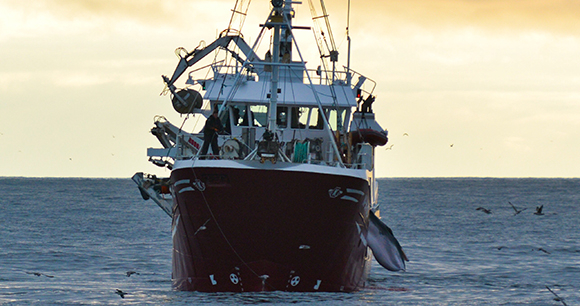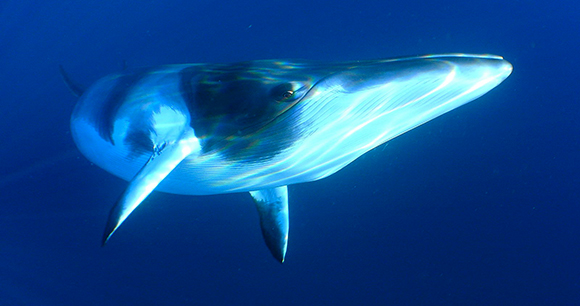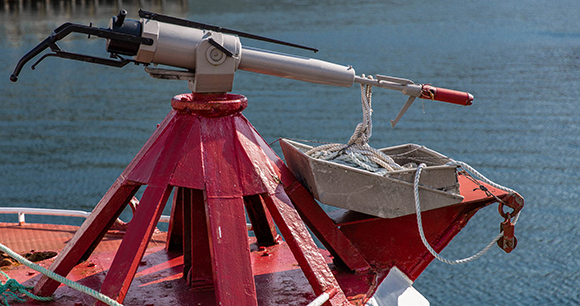
Norway has hunted whales in its own waters for centuries, but key technological advances, such as the exploding harpoon cannon, developed by its whalers in the 19th century, enabled the expansion of Norwegian whaling—and that of other nations—to an industrial scale over a much broader area. After World War I, in response to dwindling whale stocks and a shortfall of whale oil for its own market, some of Norway’s whalers returned to Norway’s own waters, establishing the foundation of modern Norwegian whaling in the North Atlantic. By the mid-1930s, Norway dominated the global whaling industry, taking more than half of all whales killed and producing a large share of the world’s whale oil.
By the time the International Whaling Commission (IWC) imposed a global moratorium on commercial whaling in 1982, Norway was exporting to Japan most of the whale products from the approximately 2,000 minke whales (the smallest baleen whale in the group of whales known as rorquals) it took in the North Atlantic each year. Norway formally objected to the IWC’s moratorium decision, which means that it is not bound by it. It also “took a reservation” to the ban on international trade in whale products imposed by the Convention on International Trade in Endangered Species of Wild Fauna and Flora (CITES), which means it can trade legally, but only with other CITES parties that hold reservations (Iceland and Japan) and with nonparties to the treaty (the Faroe Islands).
When the moratorium came into effect in 1986, Norway initially undertook a small-scale scientific hunt of minke whales. In 1993, however, it announced that it would resume commercial whaling under its objection. Since then, Norway has continued to whale for commercial purposes, killing many hundreds of minke whales every year—more than 17,000 in total during this span.

An unsupervised and inhumane hunt
Norway’s quotas have not been approved by the IWC and are set using a method that has not been agreed to by the IWC. Concerns have been raised about the hunt by the Norwegian Scientific Committee for Food and Environment (VKM), According to the VKM, females are “overrepresented” in Norway’s catch. Studies show that 66–77 percent of hunted whales are female, of which 37–91 percent are pregnant. This disproportionate removal of females, many of them pregnant, reduces reproduction rates, slowing recovery of the population to historical abundance levels.
Despite claims by the industry that its hunts are humane, a report submitted in 2016 to the North Atlantic Marine Mammal Commission and subsequently shared with the IWC by Norwegian authorities revealed that 18 percent of the whales shot by grenade-tipped harpoons did not die instantly. Within this group, the median time to death was 6 minutes. One whale took 20–25 minutes to die. During a debate on whaling held in Svolvær, Norway, in May 2024, the lack of up-to-date data on the welfare aspects of Norway’s whaling was highlighted, as well as the absence of oversight of the industry. There are currently no requirements for inspectors or observers during any stage of the whaling process.

An industry in decline
Yet, consumption of whale meat is on the decline in Norway. A 2021 survey commissioned by AWI and other animal protection groups revealed that most Norwegians have little interest in eating whale meat. Overall, only 2 percent of Norwegians polled admitted to eating whale meat “often,” down from 4 percent in 2019. Younger people are even less interested in eating whales. None of those polled in the 18–29 age group said they ate whale meat “often,” and only 1 percent of women eat whale meat often. Consumption is highest among those aged 70 and older.
As sales have declined, the number of whaling boats participating in the Norwegian hunt has also fallen, as more and more boats have preferred to focus on fishing. In 2003, 35 whaling boats were registered in Norway; in 2024, only 15 vessels were issued a permit to hunt whales, and not all those licensed opted to go whaling. In 2023, one vessel alone—the factory ship Kato—was responsible for more than 40 percent of all minke whales killed.
There has also been a downturn in the number of large processing companies registered to buy and sell whale meat. The domestic market is so diminished, Norwegian whalers are removing only the most valuable cuts of meat from carcasses and discarding the rest at sea. A growing number of whaling vessels have requested permission to sell whale meat directly to consumers in order to cut out intermediaries and improve their profits.
In its own effort to boost industry profits, the government continues to set high quotas and fund promotional campaigns and research into alternative uses of whale products. It has sponsored several marketing efforts to encourage domestic whale meat consumption—touting whale burgers and tacos, modernizing packaging, introducing “ready to heat and serve” meals, and expanding the distribution system to ensure that the “new” products are available both in local markets and national supermarket chains. However, recent efforts by the whaling industry to be included in marketing campaigns by the Norwegian Seafood Council have been rejected, given fears that promoting whale meat could harm Norway’s seafood exports.
Norwegian whaling companies are increasingly relying on export markets. One has established a branch in Japan, to which it has exported nearly 1,600 metric tons of frozen whale meat and blubber since 2018. Another whaling company is also shipping whale meat to Iceland and to the Faroe Islands. The government is now targeting markets for fresh whale meat, which sells at higher prices than frozen; the first flights carrying fresh whale meat to Japan took place in 2024. AWI is calling on airlines that serve Norway and Japan to pledge not to carry whale meat as airfreight.
Whale meat buyers, beware
Despite declining local demand, tourists to Norway are consuming whale meat in restaurants, based upon a mistaken belief that this represents a “typical” or “traditional” local product. Tourists are also purchasing whale meat sausage and nutritional supplements and skin creams containing whale oil. Because of the CITES trade ban, however, those who bring such products home to the European Union, the United States, and many other countries are breaking the law and could face significant penalties.
A 2024 report by AWI and others revealed the presence of contaminants such as perfluorooctane sulfonic acid (PFOS), part of the per-and polyfluoroalkyl (PFAS) class of chemicals that have been linked to serious health effects. These include developmental problems, endocrine disruption, cancer, and kidney disease. AWI and allies have called on the Norwegian government to expand testing of all whale meat sold for human consumption and to update health advisories accordingly.